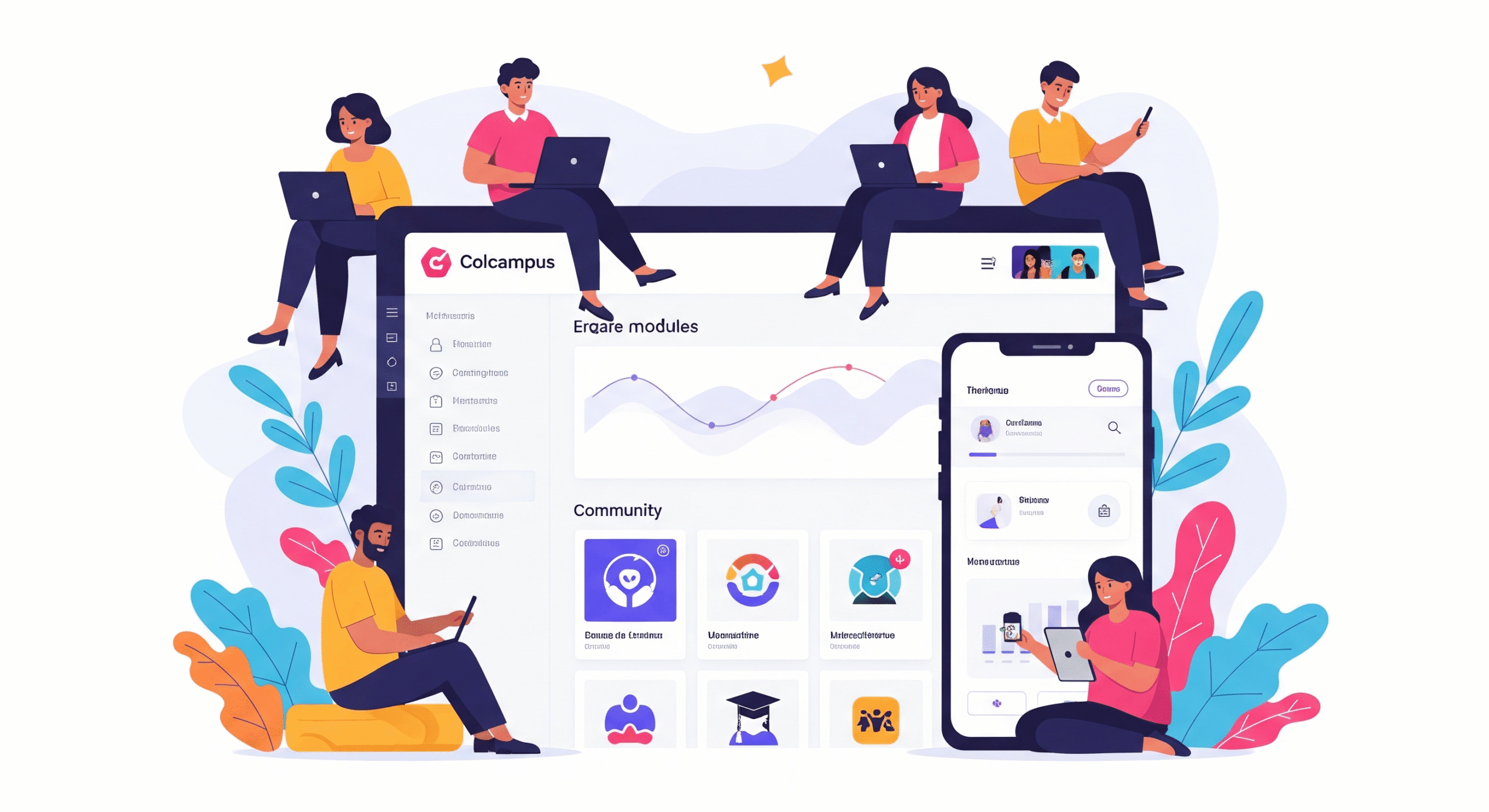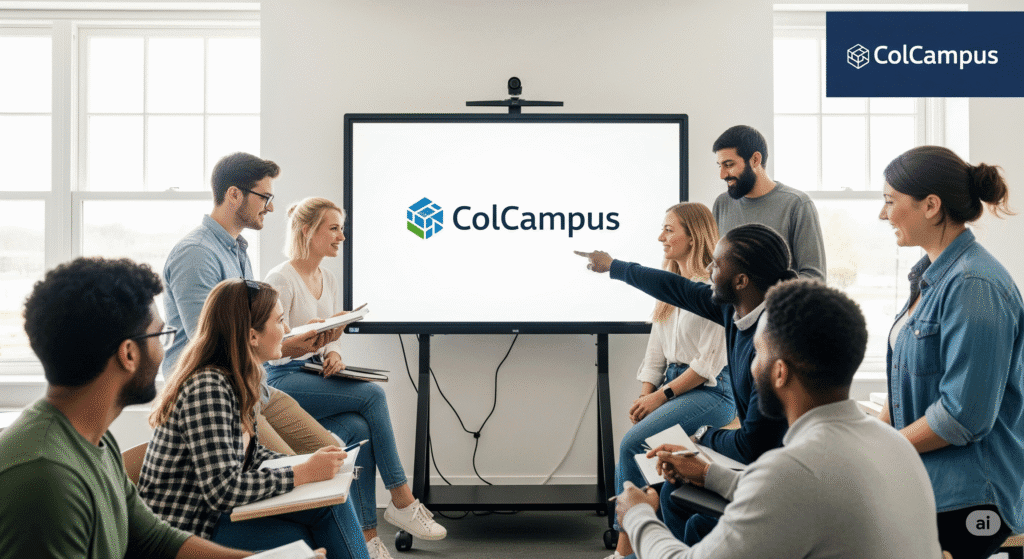ColCampus: The Ultimate Guide to Understanding and Navigating Your Digital Learning Hub
 colcampus
colcampusIntroduction
In today’s fast-paced academic landscape, digital transformation has become more than a convenience—it’s a necessity. As educational institutions increasingly move toward blended and online learning environments, platforms that facilitate seamless teaching and learning are gaining significant traction. One such platform making waves is ColCampus. This learning management system (LMS) has emerged as a reliable digital companion for students, faculty, and administrators alike.
ColCampus serves as an all-in-one hub where academic interactions are digitized and streamlined. From accessing course materials and submitting assignments to interacting with peers and tracking progress, ColCampus is designed to simplify complex educational workflows. It enables universities and colleges to offer structured, intuitive, and interactive learning experiences without the geographical constraints of traditional classrooms.
The real value of ColCampus lies in its ability to unify various educational components—lectures, assessments, discussions, and feedback—into a single, user-friendly environment. With intuitive tools and comprehensive analytics, both students and educators can make data-driven decisions to enhance learning outcomes. The platform offers a modern approach to education by promoting collaboration, accountability, and real-time engagement.
This guide aims to unravel everything you need to know about ColCampus. Whether you are a student logging in for the first time, a professor planning your semester, or an administrator overseeing multiple courses, this article will provide the knowledge you need to make the most of ColCampus. Let’s dive in and explore the full spectrum of features and benefits this platform has to offer.
What is ColCampus?
ColCampus is a cloud-based learning management system (LMS) designed to streamline academic operations for both educators and students. It facilitates online education by offering a suite of tools that support content delivery, communication, performance tracking, and classroom management. Unlike some traditional LMS platforms, ColCampus is particularly known for its user-centric design and highly customizable features, making it suitable for a range of educational institutions.
At its core, ColCampus functions as a digital classroom. It enables instructors to upload study materials, create assessments, post announcements, and monitor student progress. Students, in turn, can access learning resources, participate in forums, take quizzes, and receive real-time feedback. This dual-purpose design ensures that both parties have a robust, interactive experience.
ColCampus is often compared to popular LMS systems like Moodle, Blackboard, and Canvas, but it sets itself apart through simplicity and adaptability. It’s designed to be easy to deploy and manage, which makes it especially appealing to mid-sized institutions that may not have extensive IT infrastructure. The platform supports a range of third-party integrations and is constantly updated to meet evolving educational standards.
The development of ColCampus was driven by the need for a more agile and scalable LMS that caters to the dynamic needs of modern education. While exact details about the developers are often kept behind institutional curtains, it is widely adopted in academic networks across North America and Europe. Educational institutions have praised its ability to increase engagement and reduce administrative load.
In today’s academic climate, where flexibility and accessibility are paramount, ColCampus stands out as a critical tool for digital transformation. It provides a structured yet flexible learning environment where teaching goals and learning outcomes can be effectively aligned.
Features and Tools of ColCampus
ColCampus offers a rich array of features designed to support and enhance the digital learning experience. At the heart of its design is a dashboard that serves as the central hub for all user activities. Whether you’re a student logging in to check your assignments or a professor managing multiple course sections, the dashboard is intuitively laid out, ensuring that critical functions are just a click away.
The platform’s content management tools are robust and versatile. Instructors can easily upload and organize lectures, notes, and multimedia content. Course modules can be scheduled for timed releases, and materials can be grouped into units for better coherence. Assignments and quizzes can be created directly within the platform, complete with automatic grading and analytics that highlight areas of concern for both students and faculty.
Communication is another cornerstone of ColCampus. The platform includes integrated forums, chat functions, and announcement boards that promote interaction and feedback. Students can discuss topics in real-time, while instructors can broadcast urgent messages or weekly updates with ease. These communication tools help create a sense of community, even in fully remote settings.
For instructors and administrators, ColCampus provides detailed analytics and tracking tools. You can monitor student attendance, time spent on tasks, and overall performance trends. This data-driven insight allows for timely interventions and helps in tailoring instructional strategies to meet learner needs.
Accessibility is also a top priority for ColCampus. The platform is fully responsive and includes a dedicated mobile app, ensuring that users can engage with content anytime, anywhere. Additionally, it complies with major accessibility standards, offering screen reader compatibility and support for keyboard navigation.
Overall, the combination of intuitive design, advanced functionality, and real-time insights makes ColCampus a compelling choice for modern education.
How to Use ColCampus Effectively

Getting started with ColCampus is a straightforward process that begins with registration and login. Most institutions provide direct access via email invitations or institution-specific links. Once you’ve set up your account, you’ll land on the dashboard—a centralized space where your courses, notifications, and calendar events are neatly organized. Make sure to personalize your settings and enable notifications to stay updated.
Navigating ColCampus requires minimal technical expertise. Each course is displayed as a clickable tile, leading you to its dedicated page where all materials are stored. Tabs are usually divided into sections such as “Modules,” “Assignments,” “Discussions,” and “Grades.” Students should make it a habit to regularly check each section to avoid missing deadlines or important updates.
Submitting assignments on ColCampus is a seamless process. Typically, you’ll find a clearly marked “Submit” button next to each task, along with instructions and deadlines. Supported file types are varied, including PDFs, DOCX, PPTs, and even video submissions. Once uploaded, assignments are time-stamped, and students can check the status of their submissions and view grades once posted.
For exams and quizzes, ColCampus provides a secure, timed environment. Professors can set restrictions such as IP filtering and time limits to maintain academic integrity. Many quizzes are auto-graded, providing instant feedback, while others may require manual grading, especially essay-based questions.
Communication is key in any academic setting, and ColCampus makes it easy to interact with both professors and classmates. The platform supports private messaging and public forums. Students are encouraged to engage in discussions, ask questions, and share insights, creating a collaborative learning environment.
For instructors, ColCampus offers tools for course planning, grading, and student tracking. Features like bulk grading, plagiarism detection, and grade analytics can save considerable time while enhancing teaching effectiveness. Understanding how to fully leverage these tools can drastically improve the digital learning experience for everyone involved.
Benefits and Challenges of Using ColCampus
ColCampus brings a multitude of benefits to the table, beginning with its ability to streamline academic tasks. It minimizes paperwork, consolidates information, and automates processes such as grading and attendance tracking. This operational efficiency is a major draw for institutions looking to modernize their educational delivery.
Another standout advantage is increased engagement. With interactive tools like forums, quizzes, and real-time feedback, students are more likely to stay involved and motivated. The availability of performance analytics allows both students and educators to monitor progress, identify gaps, and take proactive measures to ensure success.
Additionally, ColCampus promotes a culture of accountability. Deadlines, announcements, and task lists are clearly visible, helping students manage their time effectively. Notifications and calendar syncing ensure that important dates are never missed, contributing to better academic discipline.
However, no system is without challenges. Common issues include login difficulties, especially during peak times, and occasional compatibility problems with certain file types or browsers. Some users have reported performance lags during live sessions or when multiple media files are loaded simultaneously.
Despite these hiccups, most challenges are easily mitigated with proper training and support. Many institutions offer help desks and tutorials to guide users through the initial learning curve. Furthermore, ColCampus is continuously updated to fix bugs, improve usability, and introduce new features based on user feedback.
Real-world testimonials speak volumes about ColCampus’s effectiveness. Students appreciate its intuitive design and reliability, while educators commend its depth of features. Many institutions report improved academic outcomes and streamlined operations after adopting the platform.

As educational technologies continue to evolve, ColCampus remains committed to innovation. Future updates are expected to include AI-driven recommendations, enhanced mobile functionalities, and even virtual reality integrations, keeping it at the forefront of digital education.
Conclusion
ColCampus is more than just a learning management system—it’s a digital ecosystem designed to foster academic excellence in a virtual environment. With its wide range of tools for communication, content delivery, performance tracking, and customization, ColCampus empowers students and instructors to collaborate effectively and achieve their goals.
The platform’s intuitive design, robust features, and commitment to accessibility make it a valuable asset for institutions of all sizes. While it comes with a learning curve and occasional technical hiccups, the long-term benefits far outweigh the initial setup challenges. It streamlines operations, enhances engagement, and supports a more accountable and efficient academic experience.
As education continues to adapt to digital trends, platforms like ColCampus will play a pivotal role in shaping the future of learning. Whether you’re a student trying to stay organized or an instructor seeking to simplify your teaching workflow, ColCampus offers the tools you need to succeed in today’s digital classroom.
FAQs About ColCampus
What institutions use ColCampus as their primary LMS?
Many mid-sized universities and colleges in North America and Europe have adopted ColCampus as their go-to LMS due to its adaptability and cost-effectiveness.
Is ColCampus free to use for students?
Generally, yes. Most institutions cover the costs, so students can access ColCampus without additional fees.
How secure is my personal data on ColCampus?
ColCampus uses industry-standard encryption and complies with privacy laws like GDPR to ensure your data is secure.
Can I access ColCampus from my phone or tablet?
Yes, ColCampus offers a mobile-responsive design and a dedicated app for iOS and Android users.
What should I do if I forget my ColCampus password?
Use the “Forgot Password” feature on the login page or contact your institution’s IT help desk.
How can instructors integrate third-party tools with ColCampus?
ColCampus supports LTI integrations, allowing instructors to incorporate tools like Turnitin, Google Drive, and Zoom.
What file types are supported for assignments on ColCampus?
Common file types like PDF, DOCX, PPT, XLS, and video formats (MP4, AVI) are fully supported.
Does ColCampus support live video lectures and conferencing?
Yes, instructors can schedule and host live sessions using built-in tools or integrations with Zoom and Microsoft Teams.
Is ColCampus compatible with screen readers and other accessibility tools?
Absolutely. ColCampus adheres to major accessibility standards, making it usable for students with disabilities.
Where can I find tutorials or help if I’m new to ColCampus?
Most institutions provide a support section within the platform, and ColCampus also has official documentation and tutorial videos.

